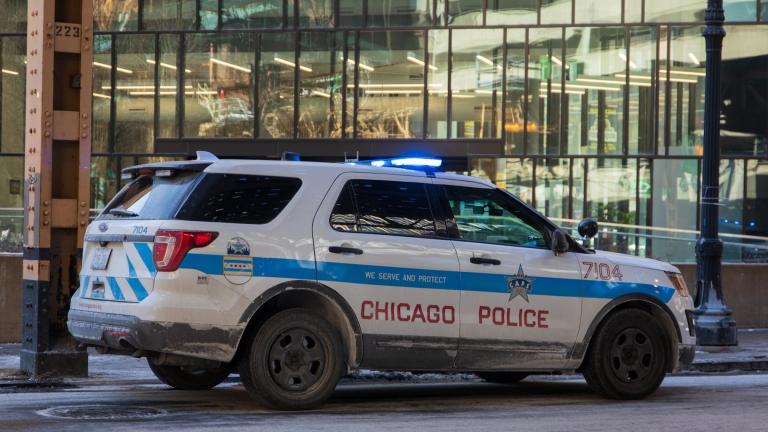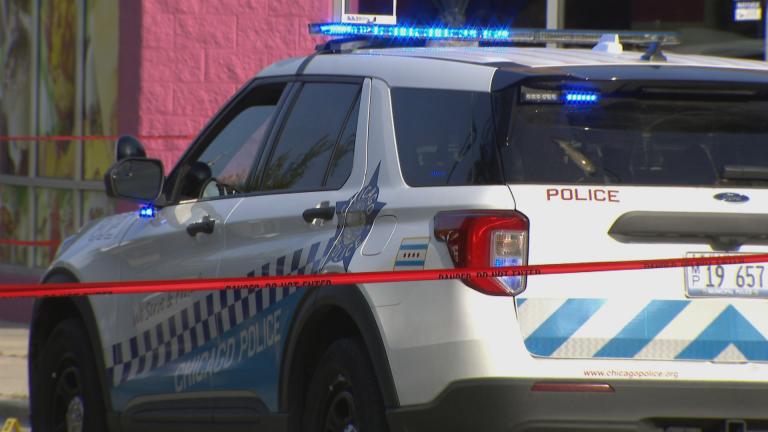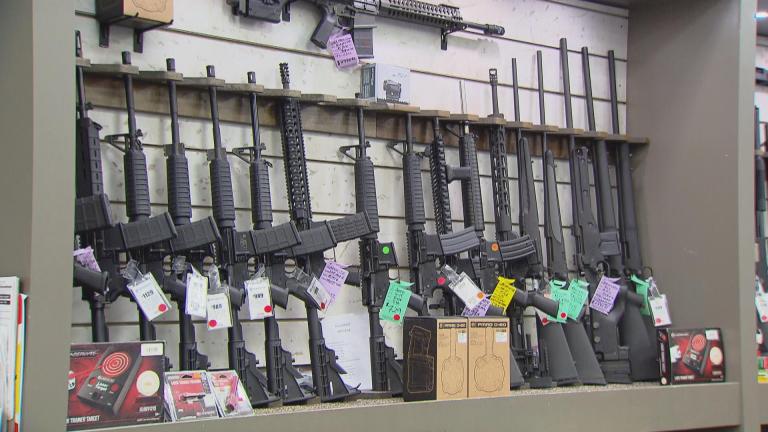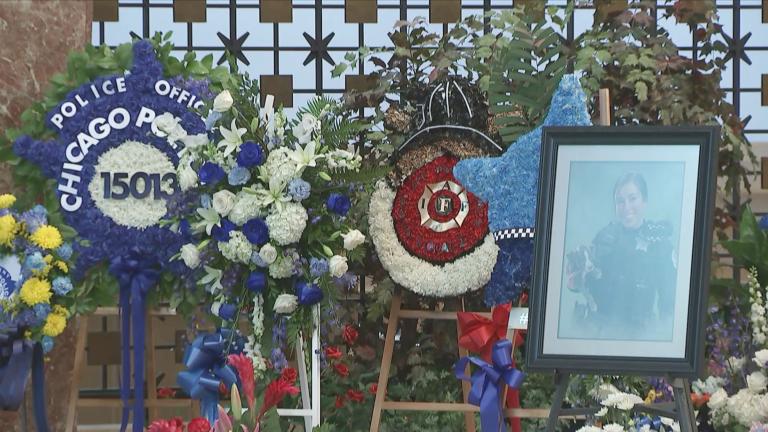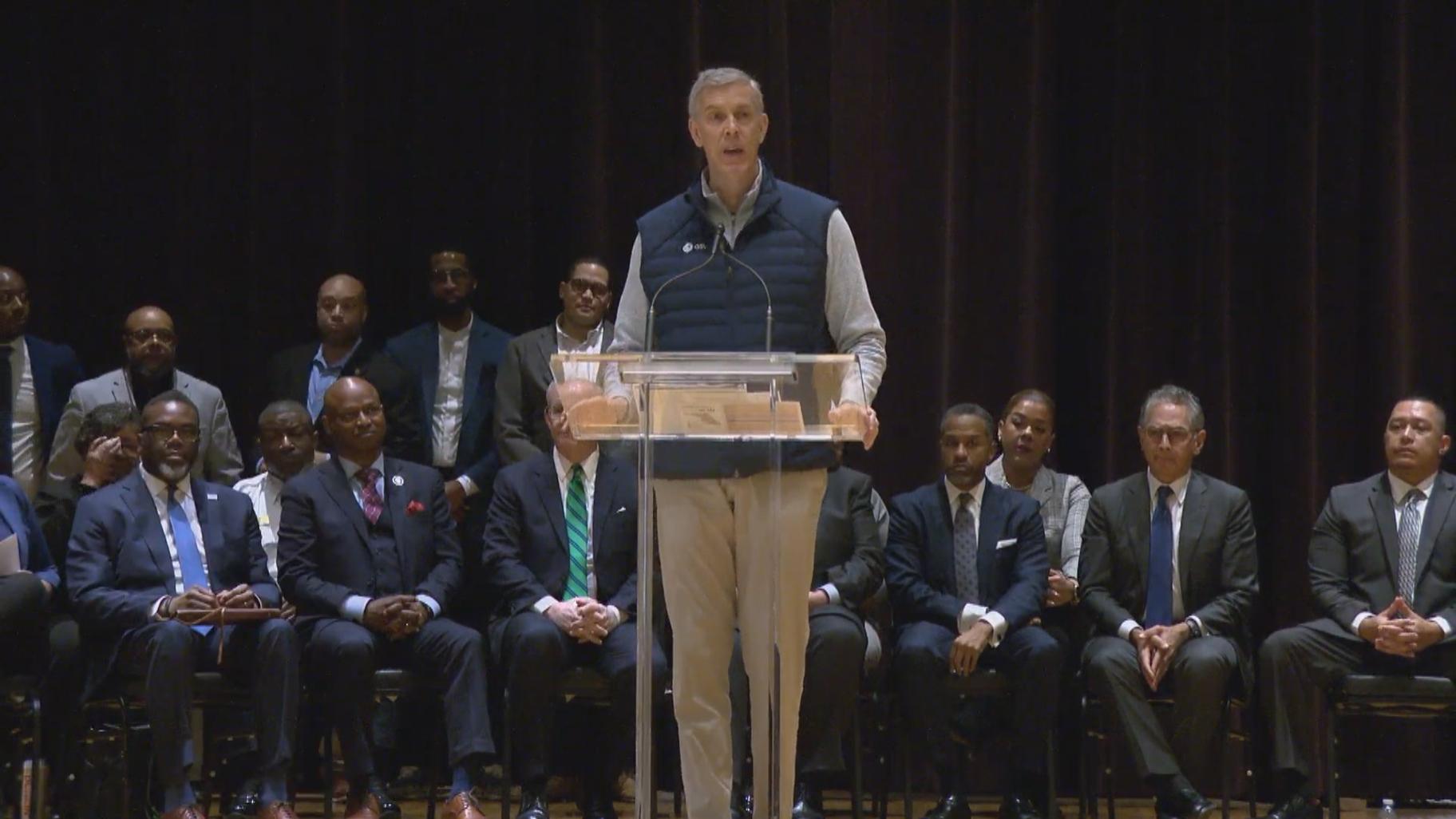 Arne Duncan, former Chicago Public Schools CEO and the founder of the gun violence prevention nonprofit Chicago CRED, speaks at a news conference Feb. 1, 2024. (WTTW News)
Arne Duncan, former Chicago Public Schools CEO and the founder of the gun violence prevention nonprofit Chicago CRED, speaks at a news conference Feb. 1, 2024. (WTTW News)
A new unified approach to combat Chicago violence aims to reduce shootings by 50% within the next five years and to roughly quadruple outreach in the most crime-stricken neighborhoods.
“We all know we have fantastic days, we have heartbreaking days, but we know change is possible,” said Arne Duncan, former Chicago Public Schools CEO and the founder of the gun violence prevention nonprofit Chicago CRED. “It’s not linear. It’s not overnight, but it’s over time. This is like a momentous day. … I can honestly say I’ve never been in a room like this, with the private sector stepping up big time, with philanthropy stepping up big time, with a unified violence prevention community across the city.”
The Scaling Community Violence Intervention for a Safer Chicago, or SC2, aims to link local community groups, aligning their strategies and connecting them with funding. Hub organizations will work with community partners to “implement plans tailored to the unique needs of each community,” organizers said.
Duncan said through the “unprecedented” effort, he hopes Chicago will serve as a national model.
“We have a chance, I honestly believe in my heart, to make history over the next three, four or five years, if we can dramatically bring down violence together, all of us together,” Duncan said.
SC2 will initially focus on North Lawndale, where community groups have been sharing data, referrals and service planning since 2022, and expand to three more communities before bringing on one more neighborhood each year until all targeted areas are covered.
Besides North Lawndale, target communities include: Austin, Englewood, East Garfield Park, West Garfield Park, Humbolt Park, Little Village and New City.
“We chose these communities based on the levels of violence they are experiencing and the capacity of these local organizations to drive the work,” said Esther Franco-Payne, director of the Partnership for Safe and Peaceful Communities (PSPC). “We also consider equity, to ensure that we are serving both Black and Brown communities where gun violence levels are high.”
The joint effort aims to coordinate care and spending between the city, county and state governments, community organizations and the business community.
“This is truly (an) unprecedented level of collaboration and should make us all proud,” said Vaugh Bryant, director of Metropolitan Peace Initiatives. “No other city in America has put together this kind of broad public-private partnership to achieve such a transformative reduction in gun violence.”
Bryant said nearly half the $400 million cost is covered “through existing public sector investments and philanthropic giving.”
Some $66 million was recently added to the bucket, fundraised by PSPC and the Civic Committee of the Commercial Club of Chicago (made of leaders of Chicago’s largest corporations) and from the Crown, Pritzker and Walton foundations.
“We recognize that the business community has a role to play in making Chicago safer,” said Hyatt Hotels CEO Mark Hoplamazian, the Commercial Club’s public safety task force co-chair. “Our goal is to be the safest big city in America.”
Task force co-chair Eric Smith, the vice chair of BMO Bank, said he’s “confident in the coming months we will reach our goal of $100 million.”
A separate initiative of the Commercial Club calls for helping to modernize the Chicago Police Department and for businesses to hire thousands of community violence intervention program participants.
Other lofty goals of SC2 include reducing shootings and homicides by 75% within the next decade, and reaching exponentially more Chicago residents.
According to organizers, between 15-20% of those at the highest risk for violence receive community violence intervention group services in 37 Chicago neighborhoods. The goal is to reach as many as five times that and to reach 75% of violent-vulnerable individuals within the next 10 years.
“You can create better communities with the work that you’re doing,” CPD superintendent Larry Snelling said.
The work can dangerous, he said.
“Our police officers will have a true understanding of the work that you do and the danger that comes with the work that you do,” Snelling said. “When you go out to these communities in these neighborhoods, you’re as vulnerable as anybody else to the violence that’s out there. And you’re willing to step up and put your lives on the line to try to keep some of it down.”
The announcement Thursday came as Chicago contends with the recent shooting deaths of several Chicago Public Schools students — two teens were shot and killed Friday outside Innovations High School in the Loop and another was shot and killed after Senn High School in Edgewater got out on Wednesday.
The Chicago Board of Education is considering no longer stationing any police in schools, a decision that had been up to individual schools.
In response to questions from reporters, Mayor Brandon Johnson said despite the shootings he supports the removal of the school officers, known as school resource officers.
“These shooting unfortunately are not new,” Johnson said. “They’re not. The city of Chicago has dealt with this crisis for decades now. The policies of old have failed us. I’m on record as saying that. Why would I go back on my word? The policies of old have failed us. Why do I have to change my mind and go back towards something that has failed us?”
Johnson said instead of relying on school resource officers, “we’re going to continue to coordinate with law enforcement to make sure that dismissal as well as arrival times are coordinated to make sure that our children are safe. And we’re going to provide resources in all of the schools to ensure that there are crisis interventionists, to ensure that we have individuals who are committed to restorative justice. That is the path forward.”
He and others signaled that despite the work ahead, progress has been made on crime, with declines the past two years in shootings.
CPD data shows robberies, aggravated battery and motor vehicle thefts significantly increased in 2023.
“We should celebrate the progress, we should celebrate the momentum, but everybody here knows how far we have to go,” Duncan said, noting the two fatal shootings outside high schools in as many weeks. “To live with that level of fear and trauma and heartbreak is unacceptable. And I would say, it’s never our children’s fault. It’s our fault as adults. It’s all our fault, as leaders.”
A Safer City is supported, in part, by the Sue Ling Gin Foundation Initiative for Reducing Violence in Chicago.
Follow Amanda Vinicky on Twitter: @AmandaVinicky

